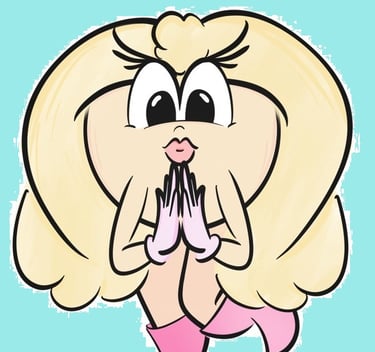
Super Mario Land
Mario's First Game Boy Adventure is more Proof of Concept than Dazzling Platformer...a Fact that Makes it, Perhaps, One of his Most Interesting...
Super Mario Land
Platform: Game Boy
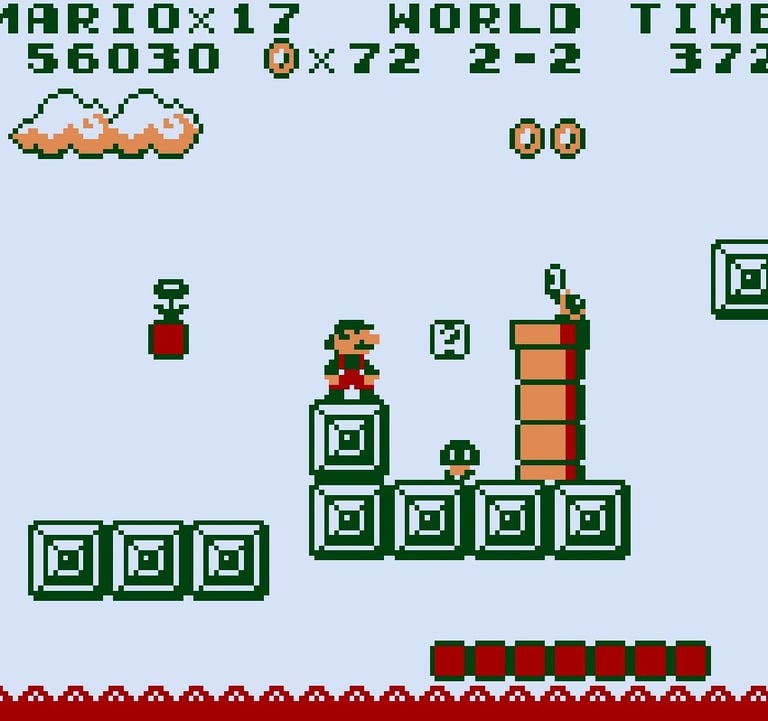

Although no mainline Mario game is truly obscure, there is one title many flippantly disregard or simply overlook—the endearingly simple, or infamously basic, Super Mario Land.
At first glance, the game seems deceptively like the original Super Mario Bros. The graphics bear a similar likeness, the mechanics are largely the same, the levels are still overly linear, and even backtracking is kept impossible. Indeed, in a certain sense, it’s the original’s true sequel.
But there’s a strangeness, an almost eerie, unseemly feeling, that pervades the experience. Like chomping into an apple that’s gone a little too soft, or a banana that seems a little too brown. Here, Mario’s journey is a cascade of gray. Koopas (called Nobokons here) explode when stomped. Robots march along the seashore while flying saucers serve for trees in the background. Fireballs have been replaced with “Superballs” that bounce once and then fly uselessly into the air. Moai statues bounce and pounce like springs. Bowser has been replaced by an alien (Tatanga). Even the princess isn’t the same. (Hi, I’m Daisy!)
In short, the game feels oddly off-brand, as if contracted to a third-party that didn’t fully understand the property, or like a random fangame that veered into the weird. And those intuitions are not altogether wrong…
Super Mario games were usually the product of series creator Shigeru Miyamoto and his R&D4 development team. But circa 1988, another division, R&D1, was scurrying to develop the Game Boy handheld and its initial lineup of titles; wanting an easy showcase of the system’s abilities, Nintendo president Hiroshi Yamauchi told the team to design a Mario platformer. Look, scrolling graphics! Lots of moving characters! Catchy music! Genre-blending gameplay! And so, Super Mario Land was born—not from the hands of Miyamoto’s team, but from the Game Boy group only vaguely familiar with the series’ canon and mythos. Ultimately, R&D1 made whatever game it wanted, using only the first Super Mario Bros. as a reference.
Which explains, of course, the slight cognitive dissonance many experience when playing the game, that familiar but slightly off-putting feeling as Mario grabs an invincibility star or dives down a pipe or rides atop a hopping boulder. The question, then, is whether these differences, some more subtle than others, improve or detract from the overall experience.
Fortunately, the passage of time has been kind to this one.
No doubt, Super Mario Land was popular in its day, but it also had the advantage of being a launch game for an exciting new novelty. As years passed, Mario’s first Game Boy adventure quickly became dismissed in light of better titles, whether designed for the handheld or its bigger console brothers. That dismissal eventually became derision, with critics retroactively declaring the title as too short, too quirky, too inconsequential. And they weren’t altogether wrong.
But today, where so many Mario games feel cut from the same, blasé template, when the franchise’s last major new villain was Wario from 1992 (thanks to Land’s sequel, no less!), when other experimental off-shoots like Super Princess Peach and the Wario Land series have been left to languish if not outright die…Mario Land’s distortions of the traditional formula now seem daring, even brilliant. Mario in a submarine, blasting marine life? Fun! Mario in a biplane dogfighting aliens? Weird…but fun! The four kingdoms themselves set in real-life locations, from Egypt (Birabuto) to China (Chai)? Neat!
Modern Mario games could use a sliver of this unabashed kookiness.
The good news is that the unseemly hijinks continued, somewhat, in Super Mario Land 2; the sadness is that Nintendo eventually abandoned the (2-D) Land games and timeline altogether (a few nods in Mario Maker 2 notwithstanding), saving only Wario and Daisy before never looking back. Two characters got spared, but not the series’ quintessential quirk—an ingredient that makes Super Mario Land ever-special over the passage of time, a symbol of an era in which games were crafted with a more freehand approach and corporate rule didn’t dictate all.
It’s hard not to yearn for the old Nintendo.--D
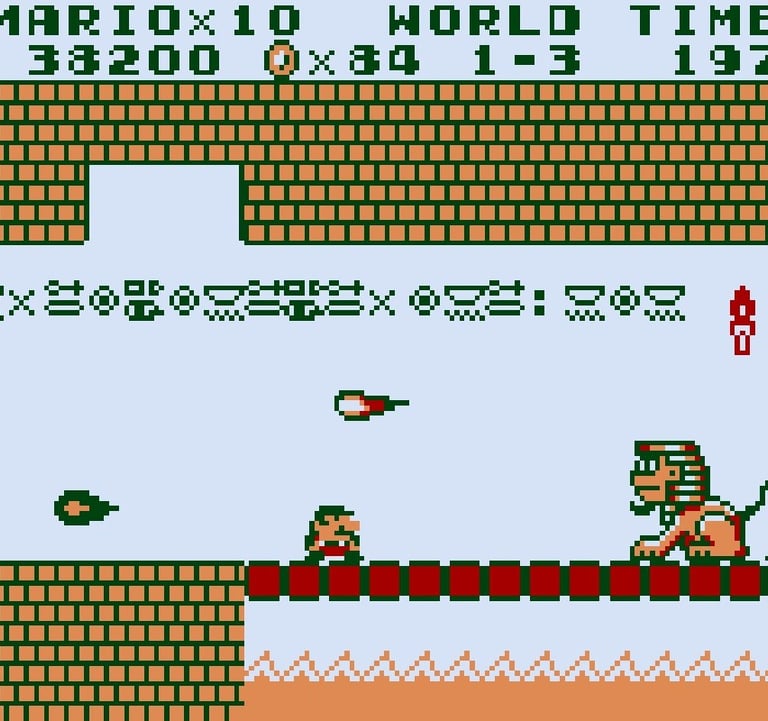

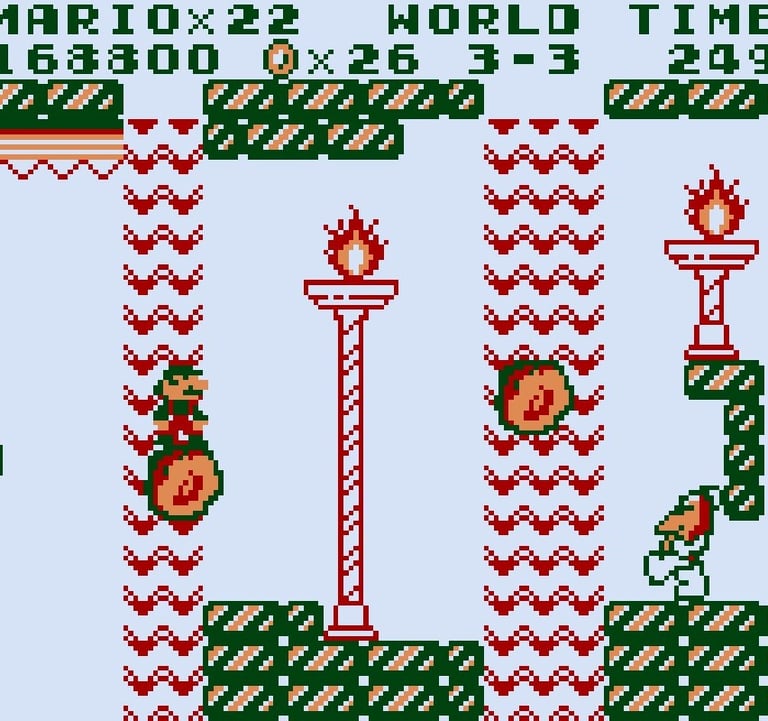

Boss fights are simple but serve their purpose.
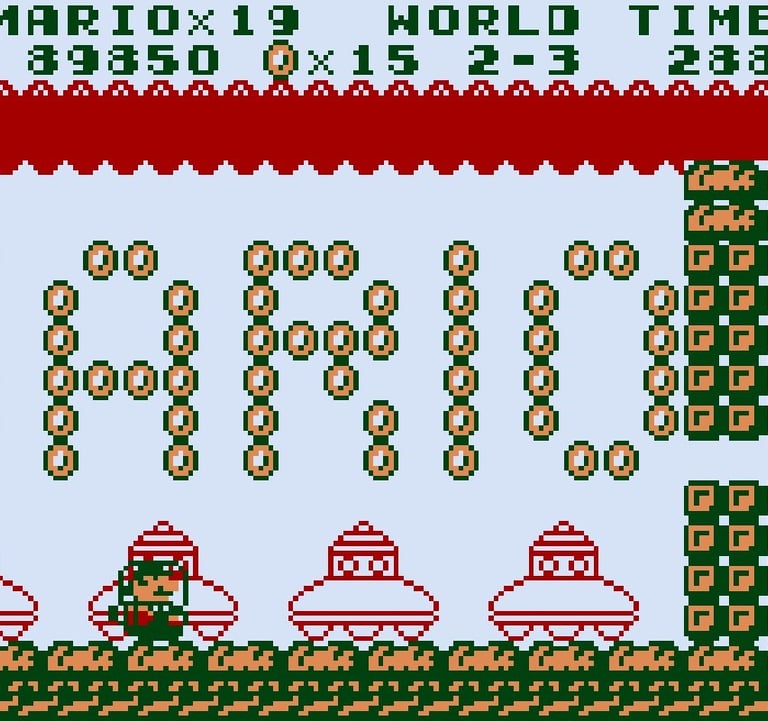

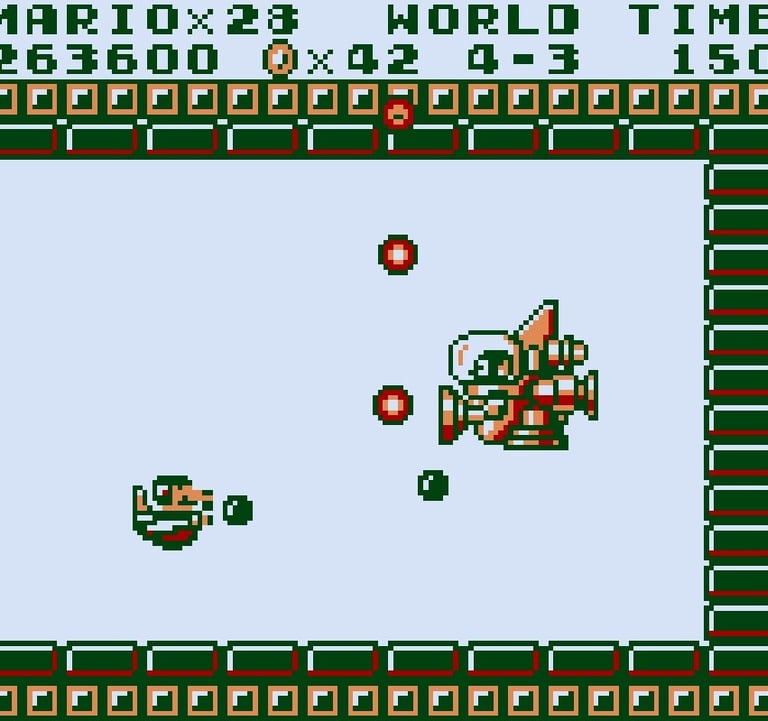

Stages 2-3 and 4-3 are horizontal shooters. Pretty fun ones, too.

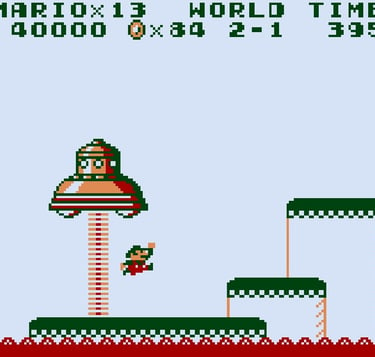
Flying saucer trees?
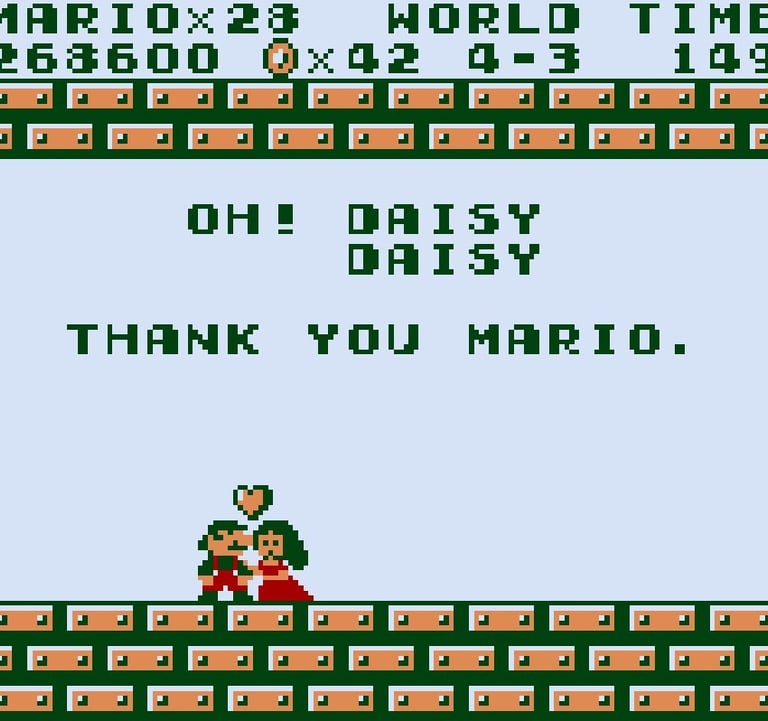

Aww, but that's Luigi's girl...right?
Publisher: Nintendo (R&D1)
Developer: Nintendo
Release: July 1989
Genre: Platformer
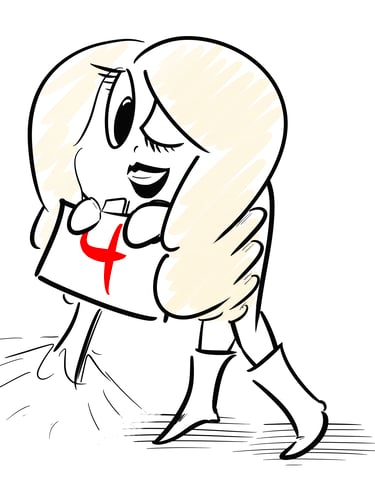

Contact: lostnostalgiaproductions@gmail.com
Website: www.lostnostalgia.com
Like what we're doing? Please consider throwing us a dollar into our Patreon page's tip jar!
